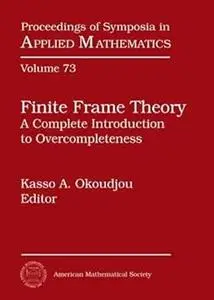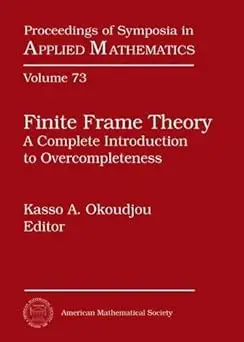Kasso A. Okoudjou, "Finite Frame Theory: A Complete Introduction to Overcompleteness (Proceedings of Symposia in Applied Mathematics) "
English | ISBN: 1470420198 | 2016 | 241 pages | PDF | 2 MB
English | ISBN: 1470420198 | 2016 | 241 pages | PDF | 2 MB
Frames are overcomplete sets of vectors that can be used to stably and faithfully decompose and reconstruct vectors in the underlying vector space. Frame theory stands at the intersection of many areas in mathematics such as functional and harmonic analysis, numerical analysis, matrix theory, numerical linear algebra, algebraic and differential geometry, probability, statistics, and convex geometry. At the same time its applications in engineering, medicine, computer science, and quantum computing are motivating new research problems in applied and pure mathematics. This volume is based on lectures delivered at the 2015 AMS Short Course "Finite Frame Theory: A Complete Introduction to Overcompleteness", held January 8-9, 2015 in San Antonio, TX. Mostly written in a tutorial style, the seven chapters contained in this volume survey recent advances in the theory and applications of finite frames. In particular, it presents state-of-the-art results on foundational frame problems, and on the analysis and design of various frames, mostly motivated by specific applications. Carefully assembled, the volume quickly introduces the non-expert to the basic tools and techniques of frame theory. It then moves to develop many recent results in the area and presents some important applications. As such, the volume is designed for a diverse audience including researchers in applied and computational harmonic analysis, as well as engineers and graduate students.
Read more



